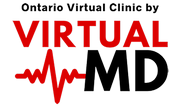Migraines are a type of headache with specific characteristics that makes them different from the typical tensional or cluster headache. It is a widespread disorder that many people suffer from.
They occur more in women than in men, and usually start during adolescence and become less frequent after reaching menopause. Besides these factors, migraines have a significant genetic component, meaning that if someone in your family has it, it’s more probable for you to acquire it.
Symptoms
Maybe one of the most critical aspects of migraines is the symptoms since they are so distinctive of this condition; it’s what helps with the diagnosis too.
A lot of migraines are preceded by an aura, which is a moment before the headache, from 15 to 30 minutes, where people can experience disturbances in the lights, hallucinations, or even a strange sensation or tingling in the face or arms.
When the headache sets in, it is typically a pounding or pulsating feeling that intensifies with movement or physical activity. Some people have it unilaterally or around the eyes, and in the worst cases, it’s accompanied by nausea, vomiting, and even discomfort with lights, sounds, and smells.
What’s worst is that when the migraine is gone, a person can still sore at the site of the pain and generally fatigued.
Causes
The mechanisms of why migraines occur are not entirely understood. What is known is that a complex series of events happen that cause the constriction of the brain’s blood vessels; this is when the aura typically occurs. Then, because there is no blood reaching the places it needs to go, the blood vessels dilate very fast, generating a strong flow that can hurt the nerves around it. That’s why the pain is pulsatile.
There are other theories for the explanation of this disorder, but the most important thing is to identify the factor that can trigger a headache. For example, a bad sleeping habit like sleeping too much or too little can activate migraines. Certain foods, such as chocolate, bananas, wine, or cheese, are also known as triggers. Furthermore, strong smells like cigarette smoke or disinfectant could also start a migraine attack.
What initiates an episode may vary between each person. Anyone that experiences migraines should look for their specific trigger and try to avoid it because once the pain kicks in, it is challenging for it to go away. Some doctors recommend keeping a daily diary of the headaches to see what happened that day that could have started the migraine.
Management
This disorder has a clinical diagnosis, meaning that almost no exam or test is needed unless the doctor wants to exclude other causes or is looking for something beyond the migraine. Still, you can call free at 1-800-594-0537 and receive the advice of a specialist.
Regarding treatment, there is abortive and preventive therapy. If you only have a few episodes in a year that are not too severe, you’ll probably need abortive medications. Acetaminophen or any non-steroidal anti-inflammatory are often used. The goal is to treat the headache when the aura starts, or when the pain is setting in. What’s recommended is that the sooner the medication is taken, the easier to reverse or stop the migraine.
Another highly effective treatment of migraines is Botox. Typically, Botox is used to neutralize wrinkles. But Botox has also brought relief to many people who suffer from chronic medical conditions. In 2010, Botox was approved for use with chronic migraines. When the Botox (botulinum toxin) is purified and used in tiny doses in specific areas, and it temporarily reduces muscle contractions (migraine relief) for approximately 3 months.
Nevertheless, for patients with migraines that are harder to manage, or that have recurring episodes, they might be advised to take preventive medicines even in the absence of a headache. This type of management is used to improve the patient’s life by reducing the frequency and severity of the attacks, also making it more responsive to abortive therapy.
If you have comments or questions regarding migraines, don’t hesitate to contact VirtualMD by calling us free at 1-800-594-0537, a doctor will be there to help you. We can fax a prescription to your pharmacy of choice if required.
